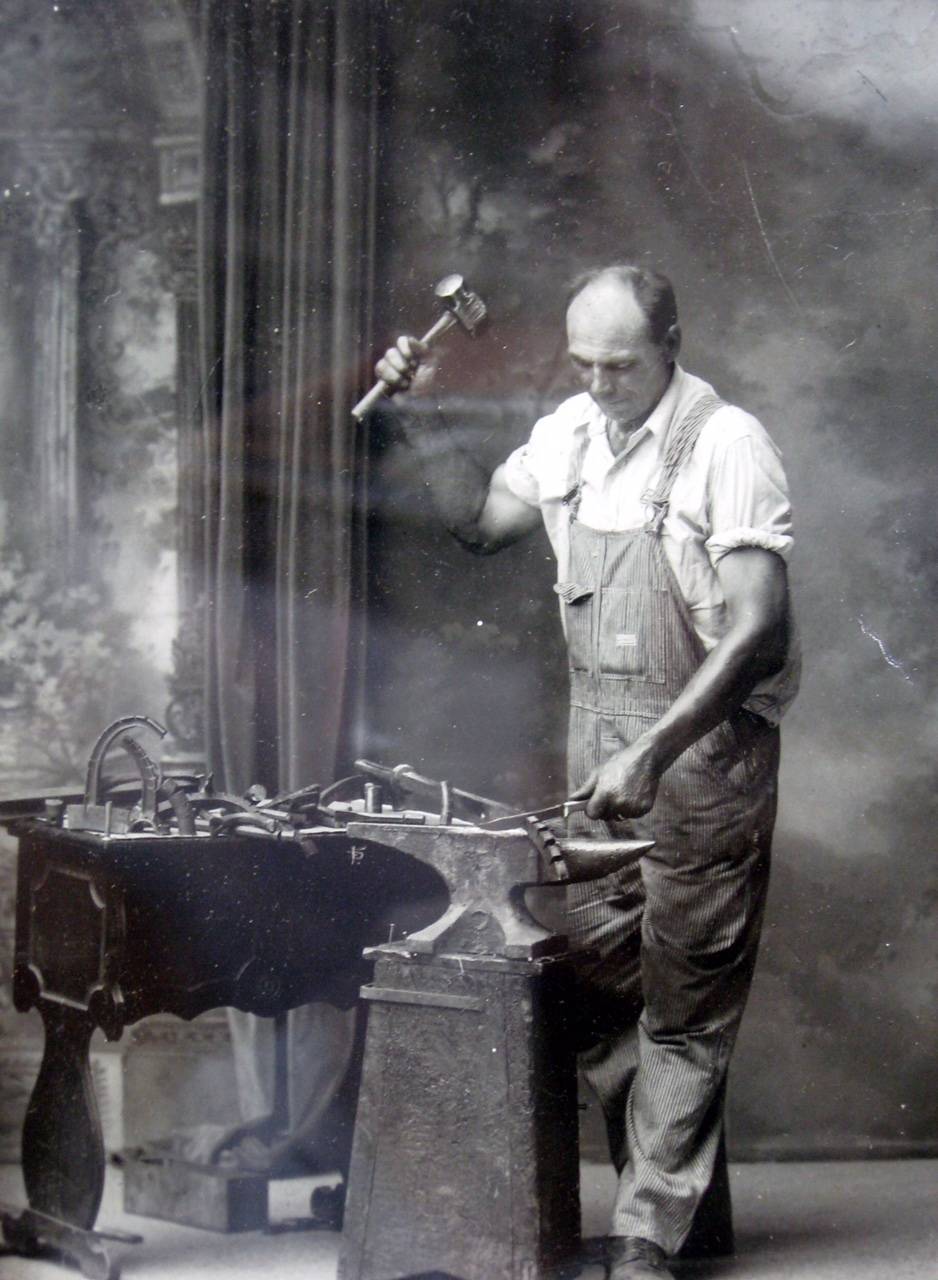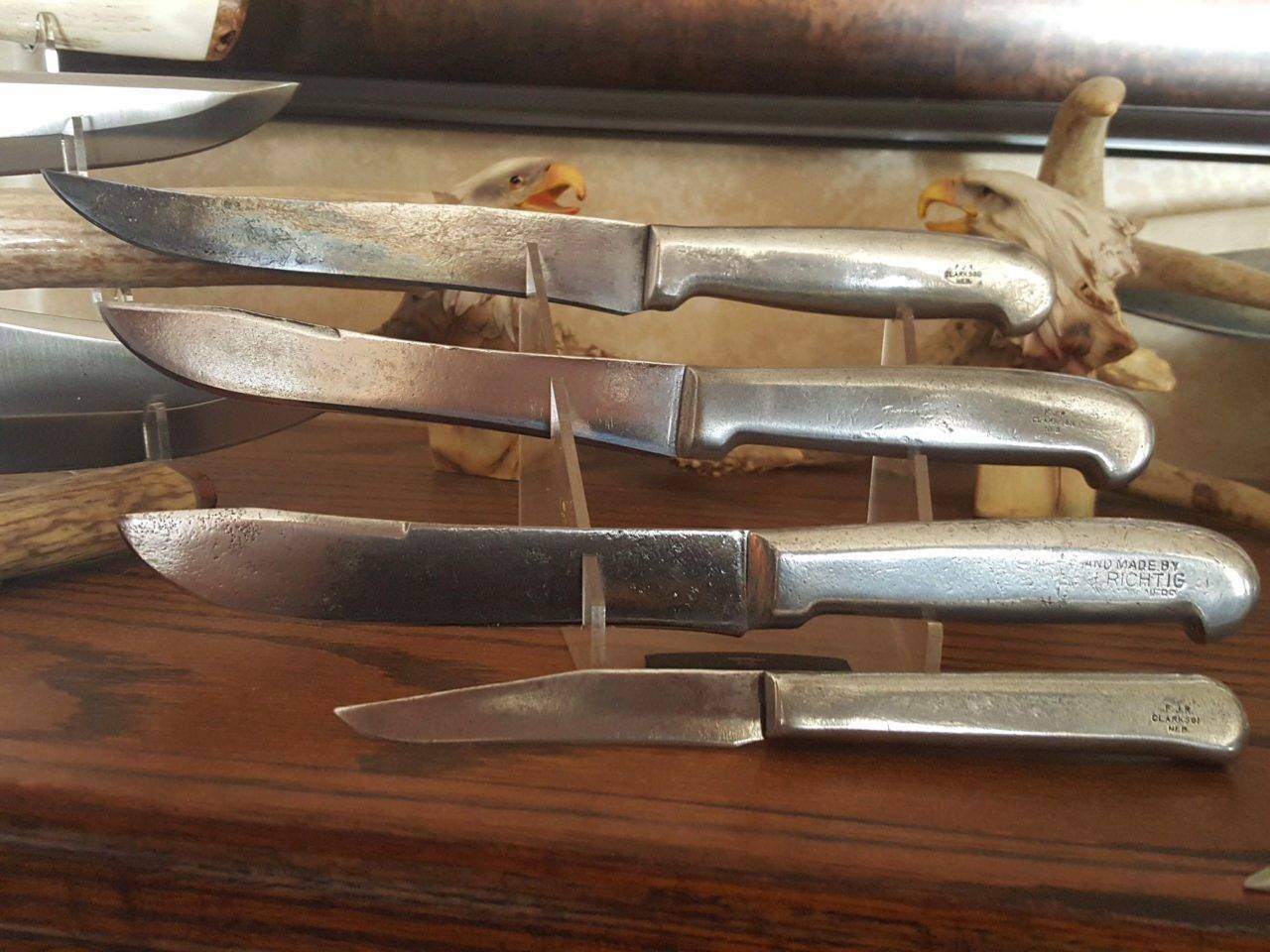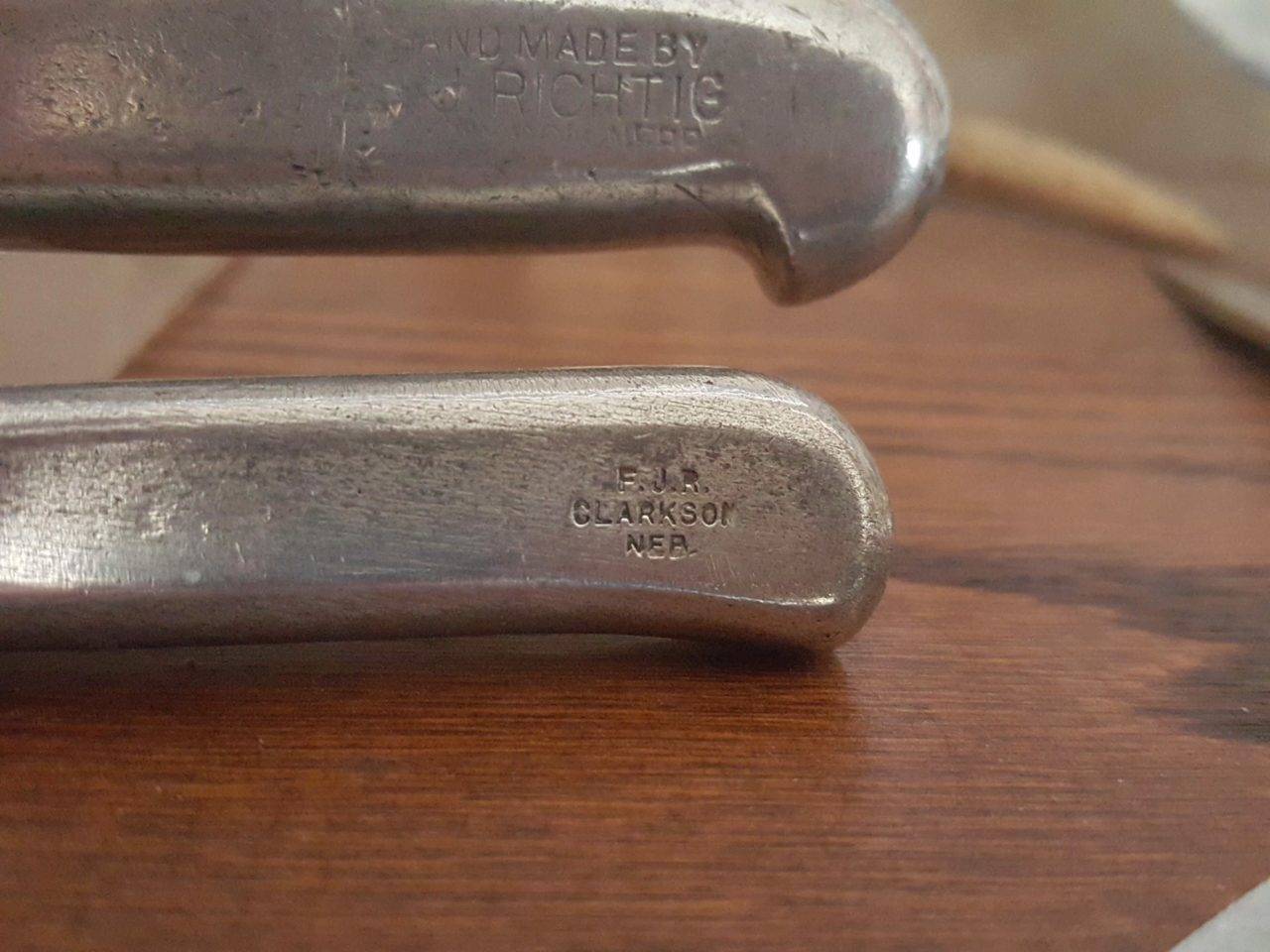Knife Making and Maintenance
The History Behind The Mysterious Richtig Knives
02.03.2018

In the world of knife collecting, there are a few names that everyone, young and old alike, has heard of. Names like Case, Buck, Uncle Henry, just about everyone knows of them, but when you mention the name Richtig, you are more than likely going to be met with some blank stares.
Frank Richtig was born in the late 1880’s in Nebraska. He started making and selling knives around 1927 and continued up until his death in 1977. He made a living selling his knives, in a time when custom knife makers were few and far between.
Richtig had a very unorthodox method of demonstrating how good his knives were. Whenever he would go somewhere to sell his wares, he would set up an anvil. He would then take a hammer and one of his knives and start cutting through horseshoes, nails, bars of steel and then slice up strips of paper, all to show how tough his blades were and how well they held an edge. Just imagine that sight! A burly blacksmith looking man taking a hammer and pounding a blade, cutting a ¾” bar of steel in half, and then proceeds to shave up some paper, something only the keenest of edges can do. In fact, Mr. Richtig’s sales method was such a spectacle, that his trail of cut up horseshoes was soon noticed by Ripley’s Believe it or not.

1936 Frank Richtig and his now famous knives appeared in Ripley’s after using one of his knives to cut the lock from a jail cell. After the story went out, Mr. Richtig started getting letters from all over, from people wanting one of his knives.
As sales continued to climb, Richtig produced large numbers of knives. During the war years, Richtig turned his blade designs towards a combat fighting knife for military use. And the story is that he would give the fighting knife free to those service men shipping out from the area he was from.
From all my research I have been unable to find out any sort of production numbers of the Richtig knives. Also, there seems to be accounts that indicate he gave away a large number of his merchandise, including gifts made to Presidents, Statesmen, Generals and other high ranking persons.
Richtig’s claim to fame, so to speak, was in his blades. Having the proper amount of hardness to cut through steel and iron, and yet be able to maintain a fine cutting edge. It is said that Richtig’s method of treating the steel, a closely guarded secret while he was alive, is is something he took to the grave with him.
Many years after his death, testing has been done on his blades to try and learn the tempering method he used, and judging from reports I have seen and read, they are probably pretty close, or at least in the ball park. I won’t bother to bore you with a bunch of test results that I don’t understand anyway. What I really want to know is are his knives really able to cut steel, or was it just some good salesman hype.

While I have not been lucky enough to get my hands on a Richtig knife myself, mainly due to some sticker shock at the price tags, I do have a good friend who is a collector, whom I reached out to for some insight.
I have known Todd Sappenfield for several years. He is my “go to” guy on most things knives. He is a expert at rebuilding, restoring and customizing knives, especially kitchen cutlery. It was from him several years ago, that I first learned of Richtig knives and the story behind them. Todd had several examples of Mr. Richtig’s work in his collection. When asked if he thought it possible to do the things claimed in the story, he assured me that it wasn’t just legend. Todd shared with me some photos of a few of his Richtig knives. They look nice, but pretty unassuming for what they are.
When you think about the date of manufacture of the Richtig knives, and the technology available at the time compared to today, you can’t help but be impressed. If you were to ask a custom knife maker today, to take his knife, and whack it with a hammer to cut through a steel bar, well let’s just not repeat what he would probably call you. And what about a production knife? Imagine taking your Wüsthof or a Miyabi out to the garage, walk over to a anvil, and dice up a horseshoe..yeah, I don’t think so.. I guess they really did make stuff better back then.
Whatever method Mr. Richtig used to temper his knives, whether modern lab tests discovered his secrets or not. The man knew how to make a knife that stood the test of time, that much is for certain.









